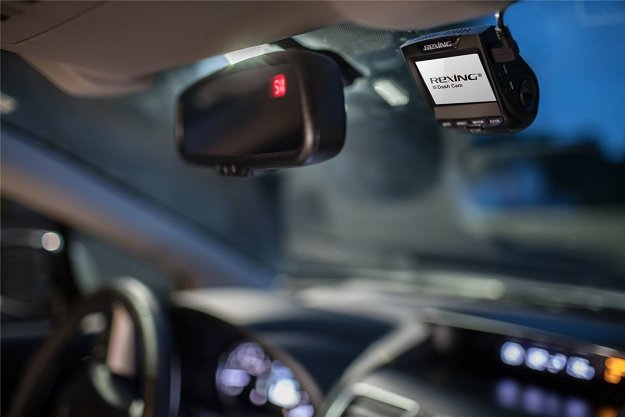The road ahead looked steep for Faraday Future after the company’s debut at last year’s Consumer Electronics Show: A year’s worth of bad news — construction was halted at the factory, suppliers sued, and in general everyone’s sweating the small stuff — made it seem unlikely that the company would even finish the course and arrive at this year’s CES.
Challenges be damned. Faraday finished the race and arrived at the Vegas tech fest with a huge presentation full of bravado; while it left us with more questions than answers, we did get to see a pre-production vehicle in the form of the FF 91, an all-electric crossover with loads of potential. Eager to see what it was capable of, Digital Trends joined Faraday Future for a demonstration and a test drive.
Sitting inside the future
FF had two “beta” models at CES 2017 to show off the car’s capabilities, and since these were test mules, we didn’t really expect much in the way of an interior — just a couple of Recaro seats bolted into the rear and a branded “FF” steering wheel — nor were we planning to hold that against FF. Whether your company is a toddler or a grandfather, a test model is still a test model.
The way the FF 91 slams occupants into their seats is on par with the feeling of punching it in some high end sports cars.
A big deal was made of the car’s instant acceleration during its reveal, where it was put head-to-head against a Ferrari 488 and Tesla Models X and S. The 130 kWh battery pack should give the FF 91 enough juice for 378 miles of range. Its electric motors generate 783 Kw – or 1,050 horsepower – and they provide instant torque, rocketing the EV from 0 to 60 in 2.39 seconds … or so Faraday Future claims, anyway. Could it do this with us inside?
Faraday lined up our test vehicle for a couple runs, and the punch to the gut as the car flew forward was substantial, to say the least. The way the FF 91 slams occupants into their seats is on par with (if not better than) the feeling of punching it in some high end sports cars like Ferraris or Porsches. It left us with a warm, bourbon-like hug in our stomach each time our test driver sent the car flying forward. We had the driver take a few extra test runs, just in case.
Less dramatic but equally impressive was how tight the turning radius was for the long wheelbase crossover. At low speeds, the rear wheels assist in steering, so the large car is easy to maneuver in day-to-day situations. At higher speeds, we can expect the FF 91’s torque-vectoring capabilities to assist in precision cornering. Having a string of battery packs in the floor of the FF 91 gives the car a low center of gravity, making it feel steady and planted during tight steering situations.
More than just a rocket
Our next demo took us out to the parking lot to showcase the FF 91’s autonomous parking. With a simple press of a button, the car deployed its hood-mounted LiDar sensor and began rolling steadily through the parking lot, scanning for open spots along the way. Once it found one, it backed into the spot and awaited its next command.
Faraday says that the FF 91 will learn its operator’s habits and frequent surroundings, enabling conveniences like self parking. For example, every day an FF 91 owner drives to work, it will recognize it as a frequently visited area and familiarize itself with the environment. Once it’s gathered enough info, it’ll alert the owner that it can park itself from that point onward. The owner simply needs to recall the FF 91 with an app command and the car will pick them up at the door.
What we saw for ourselves was indeed impressive, but it was also nothing new. We knew that the FF 91 would have instant torque and a planted center of gravity, because that’s something inherent in EV design. We’ve also seen demonstrations of cars drive around a lot and park themselves. Heck, cars have had the ability to scan and parallel park for years. This hands-off demo was too limited to get a sense of its performance capabilities, but it was impressive enough to make us want to try it ourselves. We also would’ve liked to have been able to see some of the more unique functions, like its facial recognition and connectivity capabilities.
Another thing to note was how incredibly kind and enthusiastic everyone at Faraday was during our visit. From the test drivers and engineers on hand to the key figures behind Faraday who we saw speak, everyone was eager to show off the FF 91 and were proud of what they had made. Had I seen this side of things earlier in the week, instead of the show Faraday Future put on for the FF 91’s reveal, I would’ve left the pavilion with a little more empathy for what the team endeavors to accomplish.
It may or may not be a game changer, but the FF 91 definitely has the potential to be a very good car. Let’s hope Faraday Future can stick around long enough to make it.
Editors' Recommendations
- Faraday Future plans shuttle service between Los Angeles and Las Vegas
- Faraday Future appoints BMW i8 exec as new CEO






